
01-02-2014 20:40
 Alex Akulov
Alex Akulov
Dear FriendsCan you help me with identification of

01-02-2014 16:39
 Yannick Mourgues
Yannick Mourgues
Bon, les deux autres espèces trouvées sur Rosa n

31-01-2014 13:13
 Yannick Mourgues
Yannick Mourgues
Found on Rosa.Ostiole fendu.Spores with 6-7 septa,

01-02-2014 13:15
 Alex Akulov
Alex Akulov
Dear FriendsAt first glance, sporulation of the fu

28-01-2014 23:53
 Yannick Mourgues
Yannick Mourgues
Trouvé sur tige décortiquée de Rosa sp.Périth�

28-01-2014 11:32
Found 28-01-14 in Attica Greece, in Cistus monspel
Unknown pyreno
Maren Kamke,
01-02-2014 23:16
 Hi everybody,
Hi everybody,I need your help with this pyreno. Substrate is wood which I found on the beech. Perethecia 0,3 mm, brownyellow, with central ostiole. Hymenium pale yellow. Ascospores hyalin 3-septate, (17-19) 17,95 x 6,8 (6-7) µm. Asci 86-100 x 10, IKL negative.
Thanks
Maren
Martin Bemmann,
02-02-2014 00:27

Re : Unknown pyreno
Hi Maren,
this reminds me on Exarmidium diaphanum (see my attached pdf).
Best regards
Martin
this reminds me on Exarmidium diaphanum (see my attached pdf).
Best regards
Martin
Hans-Otto Baral,
02-02-2014 10:15

Re : Unknown pyreno
Yes Martin it is probably Exarmidium inclusum, a species we had on the forum already, and which has larger spores than your diaphanum, as you have pointed out. But I cannot remember to have ever consultued the literature, only I have images a couple of collections.
I have it in Xylariomycetidae, Hyponectriaceae
Zotto
I have it in Xylariomycetidae, Hyponectriaceae
Zotto
Martin Bemmann,
02-02-2014 10:35

Re : Unknown pyreno
Yes Zotto,
I forgot this discussion. Meanwhile I do have Aptroot 1998. He synonymizes E. diaphanum with E. inclusum.
Regards
Martin
I forgot this discussion. Meanwhile I do have Aptroot 1998. He synonymizes E. diaphanum with E. inclusum.
Regards
Martin
Hans-Otto Baral,
02-02-2014 10:43

Re : Unknown pyreno
Oh yes, so this makes things easier :-) Maybe the fungus is really variable in spore size, and I noted it can occur also with much more opened hymenium half as a discomycete.
Zotto
Zotto
Maren Kamke,
02-02-2014 18:39

Re : Unknown pyreno
Hi Martin, hi Zotto
thank you very much. It is E. inclusum.
I checked on the spores size again. There isn't any difference to my first measurement. The largest one is 19,5 x 7 µm, the smallest 17 x 7 µm.
Regards Maren
thank you very much. It is E. inclusum.
I checked on the spores size again. There isn't any difference to my first measurement. The largest one is 19,5 x 7 µm, the smallest 17 x 7 µm.
Regards Maren

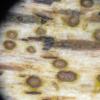
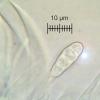
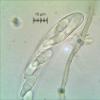
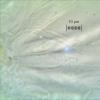
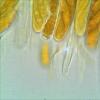
 Exarmidium-diaphanum-18VII2010-en-0002.pdf
Exarmidium-diaphanum-18VII2010-en-0002.pdf